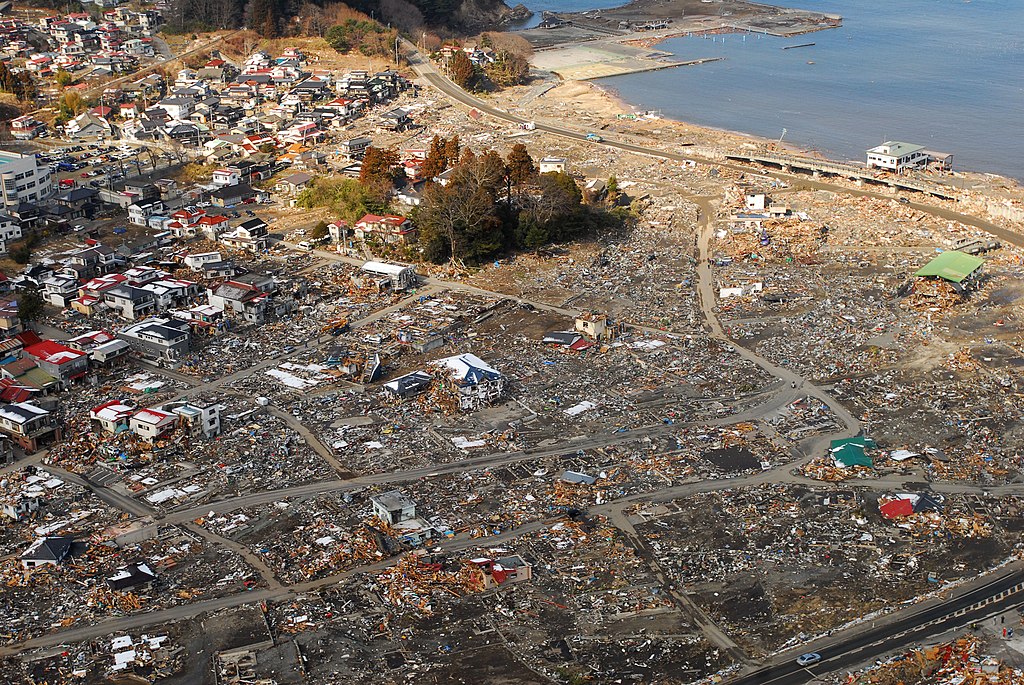Une sismologie à la vitesse de la lumière pour prévenir des tremblements de terre
RÉTROSPECTIVE. Prédire correctement la puissance d’un tremblement de terre prend du temps, avec le risque de sous-estimer l’ampleur du phénomène. Une nouvelle technique, basée sur les modifications du champ de gravitation lors du tremblement de terre, semble prometteuse. Elle pourrait livrer ses résultats en quelques minutes seulement et permettrait de sauver des vies.

Earthquakes are the only completely unpredictable natural phenomena on earth. Although unpredictable, it is nevertheless possible to detect the occurrence of an earthquake, to assess its power and to warn people a few thousand kilometres away to evacuate in case of danger. Unfortunately, it can take several hours to assess the strength of an earthquake, which can lead people to believe that the danger is low when it is not. However, when an earthquake occurs and threatens human populations, every second saved in giving the alert can save lives. A recent discovery has given a major boost to the potential for earthquake prevention.
When an earthquake occurs, the masses and densities of the rocks are redistributed by the movements of the rocks and the seismic waves that travel through them. In response, the gravitational field is also changed, affecting some detectors measurably hundreds, even thousands, of kilometres away.
But unlike seismic waves, which travel at a few kilometres per second (6 km/s on average for the fastest, P-waves), these gravity signals travel at the speed of light (i.e. 300 000 km/s). These variations in the gravitational field therefore make it possible to estimate in a few minutes (instead of several hours) the power of an earthquake and, therefore, the potential amplitude of the tsunami that could be created. The warning for an evacuation of threatened populations could therefore be given with greater reliability.
In response, the gravitational field changes at the speed of light (300,000 km/s), whereas the speed of seismic waves is between 3 and 10 km/s. Thus, for seismometers located 1,000 km from the epicentre of an earthquake, the warning can be given more than two minutes before the arrival of the seismic waves. In itself, this is still too short a time to warn of an earthquake, and measuring these changes in the gravitational field does not help.
But what makes a difference is that the correct estimate of power is obtained in minutes, instead of hours, by analysing the combined signals of the changes in the gravitational field and the seismic waves resulting from these changes. This provides information on whether or not it is necessary to evacuate populations potentially threatened by a tsunami.
The researchers arrived at this astonishing result by analysing the geophysical data measured during the major earthquake of magnitude 9.1 that occurred in Japan in 2011. A dozen seismometers located between 500 and 3,000 km from the epicentre of the earthquake were affected by changes in the gravitational field as well as by the seismic signals (the change in gravitation occurring at the location of a seismometer modifies the equilibrium position of the instrument’s mass).
Building on this success, geophysicists would like to develop techniques to assess earthquake intensities below 8-8.5 magnitudes, because below this threshold the signal is too weak relative to the Earth’s natural seismic noise to emerge clearly in the instruments. But perhaps the techniques developed to make signals as weak as those hunted in astrophysical gravitational wave detectors emerge could provide the solution to these problems.
References:
Shimoda, Tomofumi, Kévin Juhel, Jean-Paul Ampuero, Jean-Paul Montagner, et Matteo Barsuglia. “Early Earthquake Detection Capabilities of Different Types of Future-Generation Gravity Gradiometers”. Geophysical Journal International 224, no 1 (9 November 2020): 533‑42. https://doi.org/10.1093/gji/ggaa486
The LabEx UnivEarthS contributed to this research by funding the ex-Interface project “Geophysics and gravitational wave” (I13).
- Il y a 4,5 milliards d’année, l’atmosphère primitive de la Terre ressemblait à celle de Vénus [1/10]
- Observer les supernovæ : les détecteurs de neutrinos à la rescousse [2/10]
- Aux origines du Système solaire, des cristaux millimétriques au cœur de certaines météorites [3/10]
- Les détecteurs à inductance cinétique, une technologie prometteuse pour l’astronomie de précision [4/10]
- Une sismologie à la vitesse de la lumière pour prévenir des tremblements de terre [5/10]
- ATHENA, un défi technique pour la nouvelle génération de télescope de rayon X [6/10]
- Les dunes de sables, une clé pour la compréhension du climat des autres “Terres” du Système solaire [7/10]
- L’instrument spatial SVOM/ECLAIRs permettra de mieux comprendre les sursauts gamma ultra-longs [8/10]
- InSight/SEIS sonde toujours un peu plus le cœur de Mars [9/10]
- La quête de la matière noire compatible avec la recherche des supernovas [10/10]
